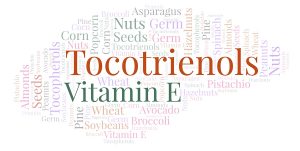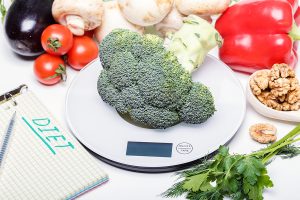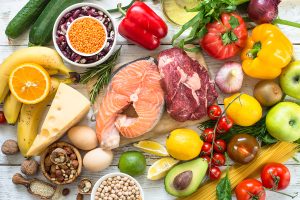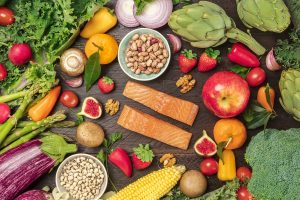At the 26th European Congress on Obesity in Glasgow, Scotland a pill against obesity was introduced. Here is a report about this on CNN. The biotechnology company, Gelesis had funded the research. This company also developed the product. The FDA has accepted this product, which is marketed under the name “Plenity”. The FDA gave clearance for Plenity as a prescription weight loss product for use in overweight adults with a body mass index above 25.0. Genesis has announced that Plenity will be available in the US by 2020. The cost of it is yet unknown.
How Plenity, a pill against obesity, works
Plenity actually is a medical device. It is a capsule that contains tiny little gel pieces that dissolve in the stomach. Patients take one capsule with water before lunch and dinner. When the gel pieces swell it gives a fullness feeling that limits calorie intake. The hydrogel pieces increase the volume of the stomach and small intestine. By the time the gel particles arrive in the large intestine, enzymes have partially broken down the hydrogel, water is released and the rest is expelled in the feces. Dr. Ken Fujioka, a weight loss expert, endocrinology researcher at Scripps Clinic and scientific advisor to Gelesis said: ”The most compelling aspects of this approach are its effectiveness, novel mechanism of action and impressive safety data. This approach creates another arm in the treatment algorithm of weight management and could be used by an overwhelming majority of people struggling with weight issues”.
Randomized placebo controlled weight loss study with Plenity
Gelesis sponsored a weight loss study with 223 patients in the experimental group and 213 in the placebo group. The length of the weight loss study was 171 days. The placebo group lost 4.39% body weight, while the group on Plenity lost 6.41%. There were very few side effects, like an abdominal fullness or bloating.
Discussion regarding Plenity, a pill against obesity
Along with taking Plenity the investigators asked the patients to also stay physically active and adhere to a sensible diet. I know from my own experience that a change in diet can make you shed significant weight and you can keep it down. In 2001 I lost 22.7 kg (=50 pounds) over 3 months, down from 85.5 kg. I weigh now 62.8 kg. With this data you can calculate that I lost 22.7/85.5=26.5% of my original weight. I did so in 90 days, not in 171. It was the difference in food intake that enabled me to lose this weight. I had cut out all sugar, starchy foods, processed food and wheat.
The pill will help patients feel full after small helpings, instead of having hunger pangs, and this can be valuable and will contribute to being successful with losing weight. But long-term weight control only works with an adjustment of dietary habits and lifestyle choices.
Keeping weight loss in perspective
The authors stated that their best patients were losing 5% and 10% when they watched their diet and exercised. When I compare my own data (26.5% weight loss) and theirs I conclude that they did not try hard enough. And they did not have to rely on any diet pills. It is clear from the data that the placebo group had significant weight loss with just watching their diet and exercising. I do acknowledge that Plenity has a slightly better effect. However, when people complete with their weight loss program, they will continue to eat their former diet regimen. This will make them gain everything back what they have lost.
For 18 years I have not gained back what I lost in 2001 because I have stayed on the same diet that some people may label as “radical”. There is nothing wrong with vegetables, salads, lean poultry, fish, nuts, fruit etc. I suspect that people could easily lose 10% to 20% of weight without any weight loss pills, if they took a similar approach as I did.
Conclusion
Weight loss seems to be a topic that is of interest to many people. There is the expectation that the new weight loss pill Plenity will be the solution to people’s diet problems. However, the difference in weight loss between the placebo group and the experimental group was only 2.02%! It took the researchers 171 days to be able to say that there was a significant difference between the Plenity group and the placebo group.
Cutting out junk foods
When I did my own weight loss program based on dietary changes alone I had lost 26.5% in only 90 days. I suggest that people should not forget to change their food intake, cutting out junk food and adopting a healthy food intake. They may not require Plenity pills at all or for a much shorter time. Preparations for the time after the weight loss achievement are necessary or else there will be rebound weight gain. Long-term success is only possible with sensible dietary choices and lifestyle choices, such as regular physical activity.















